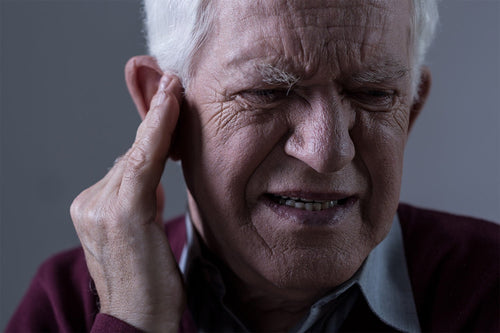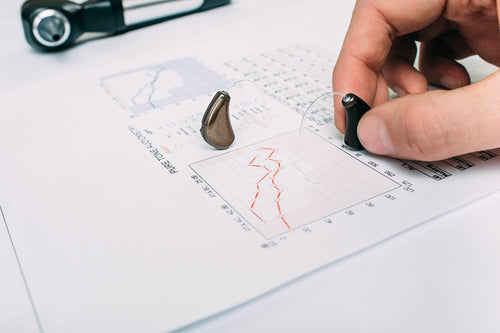If you have ever had a severe earwax blockage, you most likely have dealt with the discomfort of the blockage, but some may have also endured slight amounts of pain following a professional cleaning.
The ears are quite sensitive. Earwax accumulation and subsequent cleaning may cause some degree of discomfort.
Read more about the ear cleaning procedure and the potential causes of discomfort during and after the cleaning procedure.
What To Expect
Ear cleanings are a routine procedure done at either an audiologist’s office or an Ear-Nose-Throat specialist. Ear cleanings are not needed by most people. However, some people may develop ear wax accumulation. This could lead to subsequent earwax blockages due to a number of different factors, including age, genetics, and environment.
Below is a detailed look at what you can expect when you go to get your ears professionally cleaned due to an accumulation of earwax. Having a thorough idea of what to expect can allow you to show up with confidence and less fear of the unknown.
Medical History
The very first thing you should expect is to fill out some form of medical and personal history. With any doctor’s visit, the physician only has a brief look at your life. These questions help them to have a larger idea of the potential factors that may be contributing to your specific issue.
While nobody likes to fill out paperwork, the information you provide on these forms can be invaluable to ensuring you get the very best care possible. These forms help physicians to identify specific risk factors that may make you ineligible for a specific type of cleaning. For example, if you have sustained an eardrum injury, the use of irrigation may be avoided to avoid potential complications.
Another thing that your physician may be on the lookout for is a family history of sensorineural hearing loss. Many people who come in for ear cleanings believe their hearing loss is most likely caused by an earwax buildup.
But, in some cases, this may be only half of the equation when it comes to hearing loss. A form of hearing loss known as mixed hearing loss may be present. If suspected, the physician may want to conduct a hearing test in addition to the cleaning.
Examination

With all of the paperwork filled out you will typically go back into a patient room where you will be met by the provider. The provider may ask you to clarify some things on the medical history and then will most likely proceed to the examination.
The doctor will most likely utilize a device known as an otoscope to visualize the ear canal and see what kind of ear wax accumulation is present. The main things the physician will be looking for are the size of the accumulation, the color of the wax, and the general appearance of the surrounding ear canal. Each of these qualities will help them decide what procedural approach will be best suited for your specific blockage.
Procedure
When it comes to the actual ear cleaning procedure itself, there can be a ton of variation in what may or may not be done. Cleaning procedures can range from irrigation all the way to physical extraction.
Read on to learn more about the specific procedures and what you can expect from each one.
Potential Hearing Test
Once the ear canal is free of obstruction, your audiologist may conduct a hearing test to ensure you don’t need further assistance. As discussed previously, mixed hearing loss is one concern that your doctor may have. By clearing any earwax obstruction, they can have an easier time sorting out a definitive cause of potential hearing loss.
A hearing test consists of many different assessments, including audiometry, tympanometry, and bone conduction. Through these tests, the audiologist will have a better understanding of your hearing ability and potential problems. If a hearing deficiency is noted, the audiologist may recommend hearing aids to help bring the volume of sounds into your hearing threshold in order for you to hear them.
While hearing aids may be recommended, many people shy away from them due to their extremely high price points. Some hearing aids at the audiologist’s office can get into the thousands of dollars.
Audien is a company that has made it its mission to change the hearing aid industry and provide hearing aids at a very approachable price. With options like the EV1 starting at less than $100, you can get the hearing assistance you need without going broke over it.
Post Procedure Care
After the cleaning, your ears will likely be void of earwax, and your ear canals will be clear to receive all the sound in your environment. While many people think that this is where the procedure ends, the reality is that most cleaning procedures require some degree of care after cleaning.
One common post-procedural care that may be given is ear drops that provide a temporary level of protection to your ear canals. Ear wax actually serves an important role in the health of the ear canal, including reducing the chance of an ear infection, keeping the skin hydrated, and helping to trap small particles.
After cleaning, there may be little to no earwax left behind. As a result, the ear canals need some temporary assistance while ear wax is created and reestablished.
Types of Procedures
When talking about an ear cleaning procedure, there are many ways in which the wax may be removed. This ranges from the use of water all the way to physical extraction with the help of tools.
Below is a closer look at the common techniques utilized to remove earwax:
Irrigation
Ear irrigation is a technique that utilizes water to flush out the excess wax. Typically warm water is pushed into the ear canal using a syringe and very light pressure.
To help loosen the wax beforehand, oil may be utilized. Dropping a couple of drops of oil into the ear can help to soften a hard wax blockage and allow it to more readily flow out of the ear once water is introduced.
Physical Extraction
Physical extraction is a procedure that involves the use of small medical instruments to remove a severe ear blockage. Typically the insertion of things into the ear, such as medical instruments, is avoided. In the case of severe earwax extraction, it may be the only way to remove it.
Just like with water irrigation, oil may be used in the beginning to help soften the wax enough for it to be manipulated and removed. The oil also helps the physical extraction by offering some level of lubrication to the ear canal to allow for easier removal.
The physician will utilize a wide variety of instruments to remove blockage or wax. Some of these tools include forceps, curettes, and picks. While these tools can be obtained online, you should leave this procedure to the professionals. If done incorrectly, it can cause a blockage to become further stuck and may even cause damage to your ears.
Potential Cause of Pain

While there is a low chance of having complications during or after an ear cleaning, there is the potential for discomfort and pain.
Take a closer look at some of the reasons you may have ear pain after a cleaning:
Ear Infection
An ear infection is one possible complication that can occur after an ear cleaning. Earwax helps to protect the ears with its antimicrobial properties. Cleaning can remove most of the wax in the ear canal. Without earwax, the chance of ear infections may increase.
While an ear infection can be a possible source of ear pain following an ear cleaning, there are a number of post-procedural actions that can help to reduce these chances.
Ear Canal Irritation
Another source of potential pain following an ear cleaning has to do with the irritation experienced by the ear canal. When there is a large build-up of earwax in the canal it can apply pressure to the walls of the ear canal and begin to irritate the canal itself.
Similar to the pain felt when you wear hearing aids that are too big, earwax can exert a force to the ear canal, causing it to stretch and become irritated. Once dislodged, the irritation and discomfort may stick around for some time.
Clean Sound
Ear cleanings are a very common procedure, and when conducted by a professional in a medical setting, the chances for complications are likely severely reduced. Even though complications can be unlikely, many people do experience some level of discomfort or pain as a result of an ear cleaning.
Whether this is from a lingering ear infection or just irritation after the cleaning, they are typically short-lived and will resolve on their own. If you happen to have pain over an extended period of time following an ear cleaning or notice a decrease in your ability to hear, you should schedule a visit with your doctor just to ensure everything is okay.
Sources
Genetic Sensorineural Hearing Loss: Practice Essentials, Pathophysiology, Epidemiology | Medscape













